On the ZMZ-40522 and ZMZ-40524 engines, a catalytic converter is installed in the exhaust gas system
In design, the only difference between the catalytic collectors is that the catalytic collector ZMZ-40524 has an additional oxygen sensor (diagnostic) installed at the outlet of the catalytic collector.
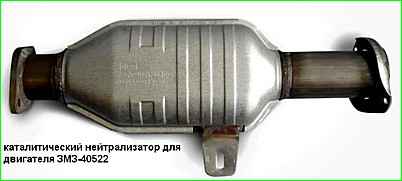
A little about the principle of operation of the catalytic converter
The exhaust gas catalytic converter is designed to reduce emissions of carbon monoxide, nitrogen oxides and unburned hydrocarbons.
Passing through the honeycomb of the neutralizer, carbon monoxide is converted into low-toxic carbon dioxide, and nitrogen oxides are reduced to harmless nitrogen.
The degree of gas purification in a working neutralizer reaches 90-95%. For normal operation of the converter, the composition of the exhaust gases (in particular, the oxygen content in them) must be within strictly specified limits.
This function is performed by the electronic engine control unit - a controller that determines the amount of fuel supplied depending on the readings of the oxygen concentration sensor.
If there are lead compounds in the exhaust gases, the catalytic converter and oxygen concentration sensor quickly fail.
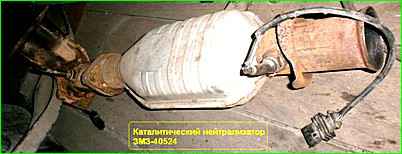
Therefore, operating a car on leaded gasoline is strictly prohibited, even for a short time.
Also, the cause of failure of the converter may be a faulty ignition system.
If sparking is missed, unburned fuel enters the converter, burns out and cokes the cells, which can lead to complete blockage of the exhaust system and engine stop (or severe loss of power).
The controller has the function of protecting the converter from misfires, which can be detected in one or two cylinders at the same time.
The controller turns off the fuel supply to these cylinders, and the engine management system malfunction indicator located in the instrument cluster lights up in a flashing mode.
In this case, it is necessary to stop driving, stop the engine, try to find the cause and eliminate the malfunction.
If this cannot be done, you will need to have the vehicle towed to the nearest service station.
Mufflers and catalytic collector are non-separable units; if they fail, they must be replaced with new ones.
A metal-reinforced heat-resistant gasket is installed between the catalytic collector and the cylinder head (common for the catalytic collector and the intake pipe).
Removing the catalytic converter
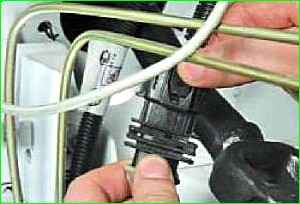
Squeeze the connector lock of the oxygen concentration sensor wiring harness (if this is a ZMZ-40524 engine, on a ZMZ-40522 engine the lambda probe is installed on the exhaust pipe).

Disconnect the sensor wiring harness block
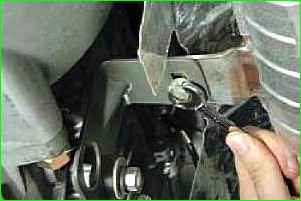
Remove the bolt securing the catalytic converter to the bracket
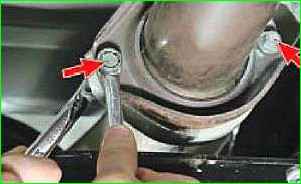
Using two keys, unscrew the nuts of the two bolts securing the catalytic collector to the muffler and remove the bolts
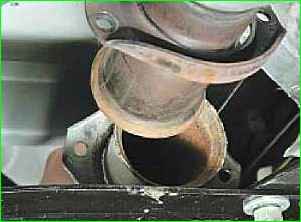
We remove the neutralizer from the muffler

Remove the O-ring
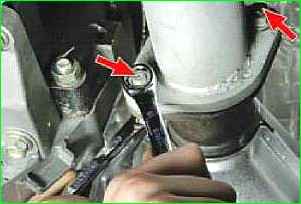
Holding the bolts from turning, unscrew the nuts of the two bolts securing the catalytic converter to the exhaust pipe and remove the bolts.
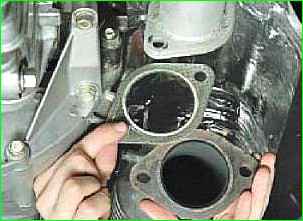
We remove the neutralizer from the exhaust pipe and remove the gasket
Removing the catalytic converter
Install the parts in reverse order.





